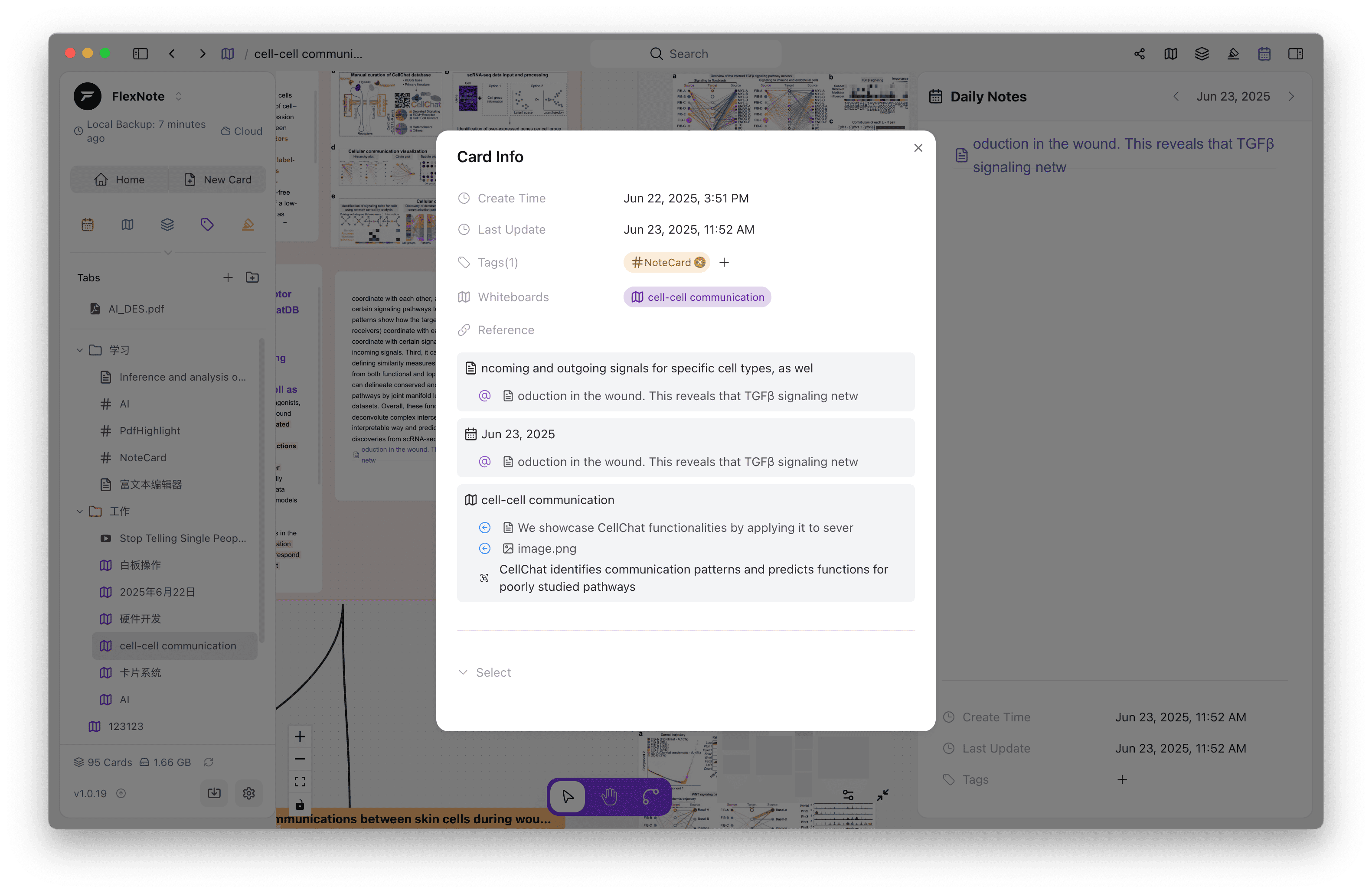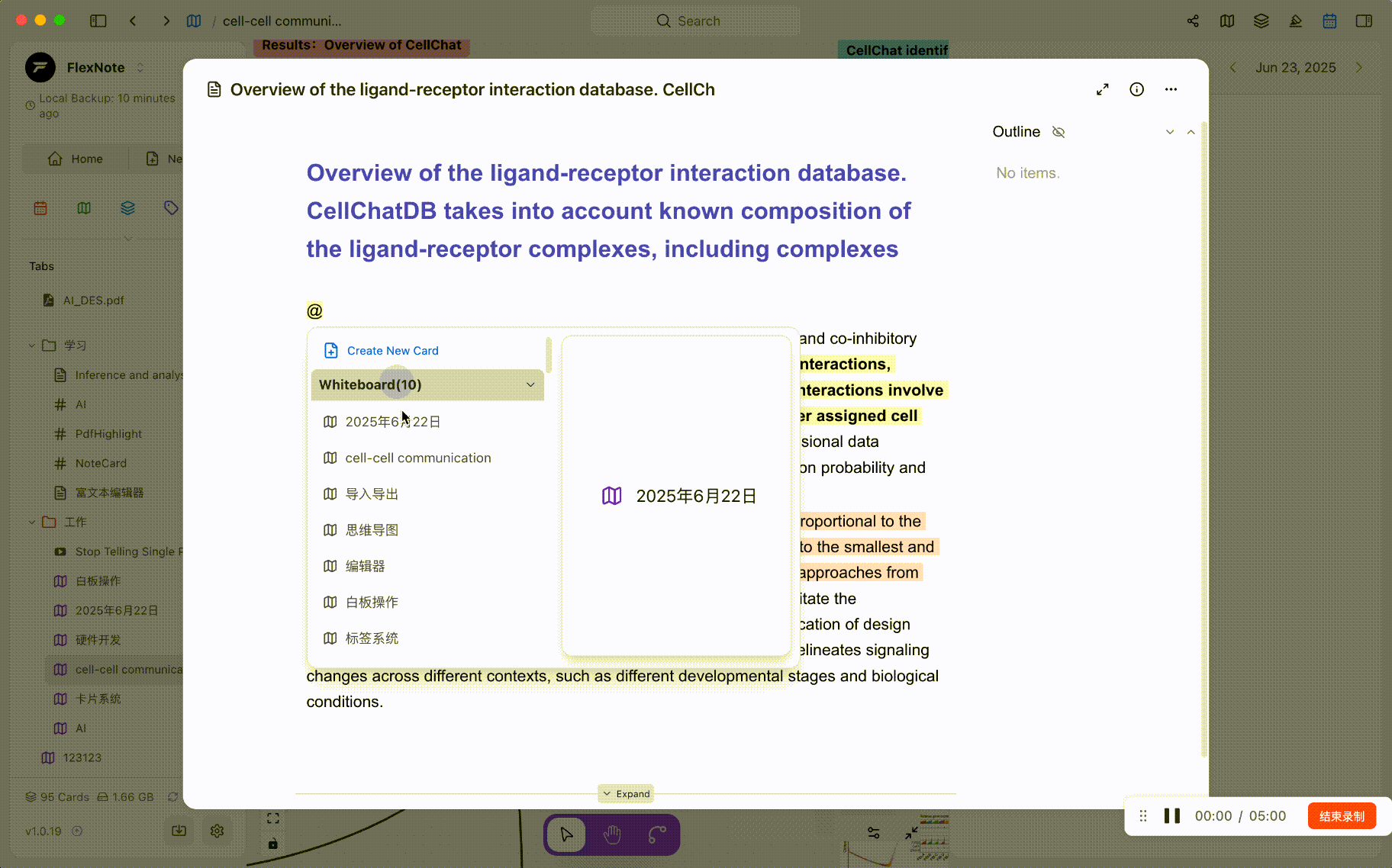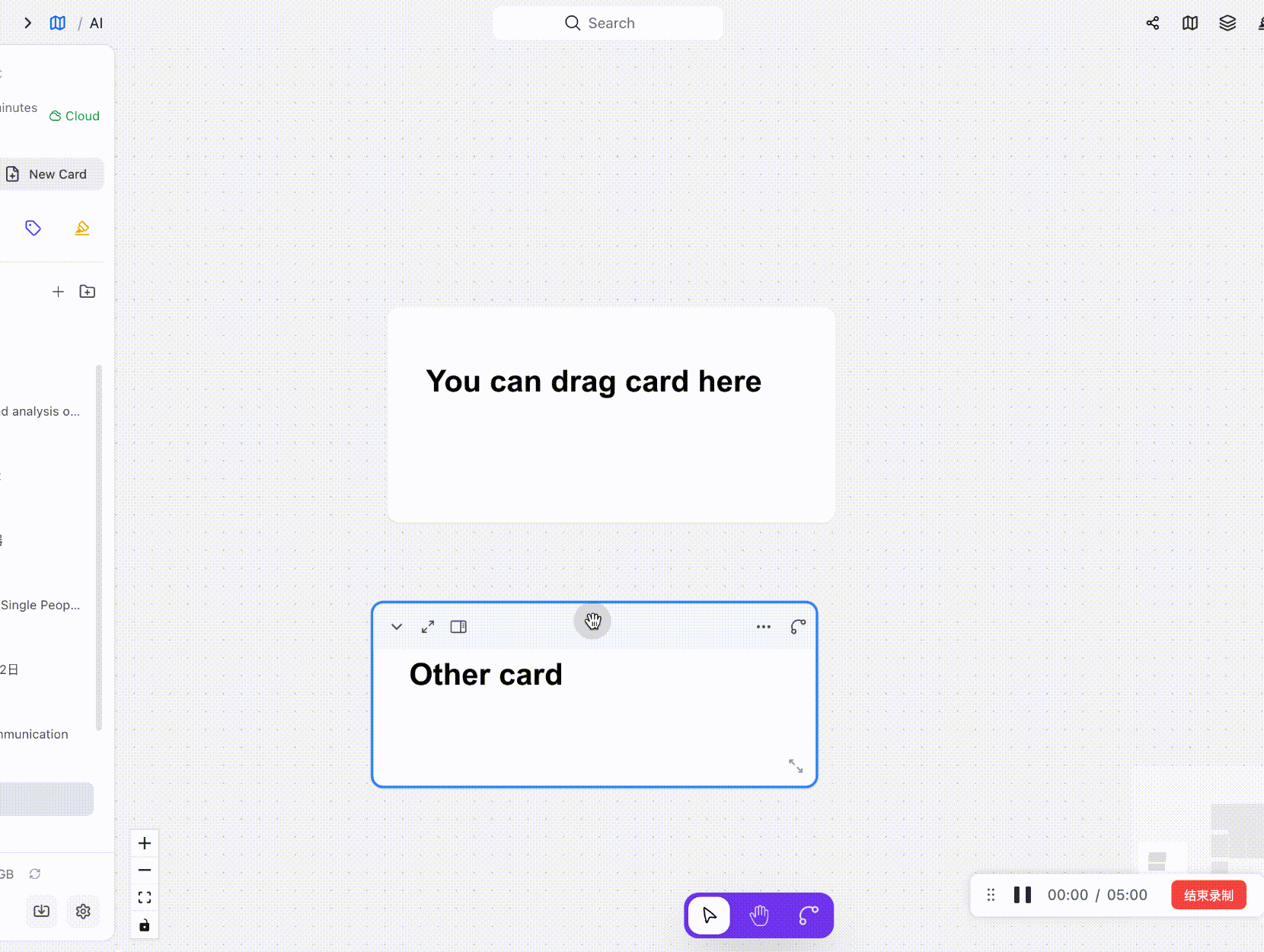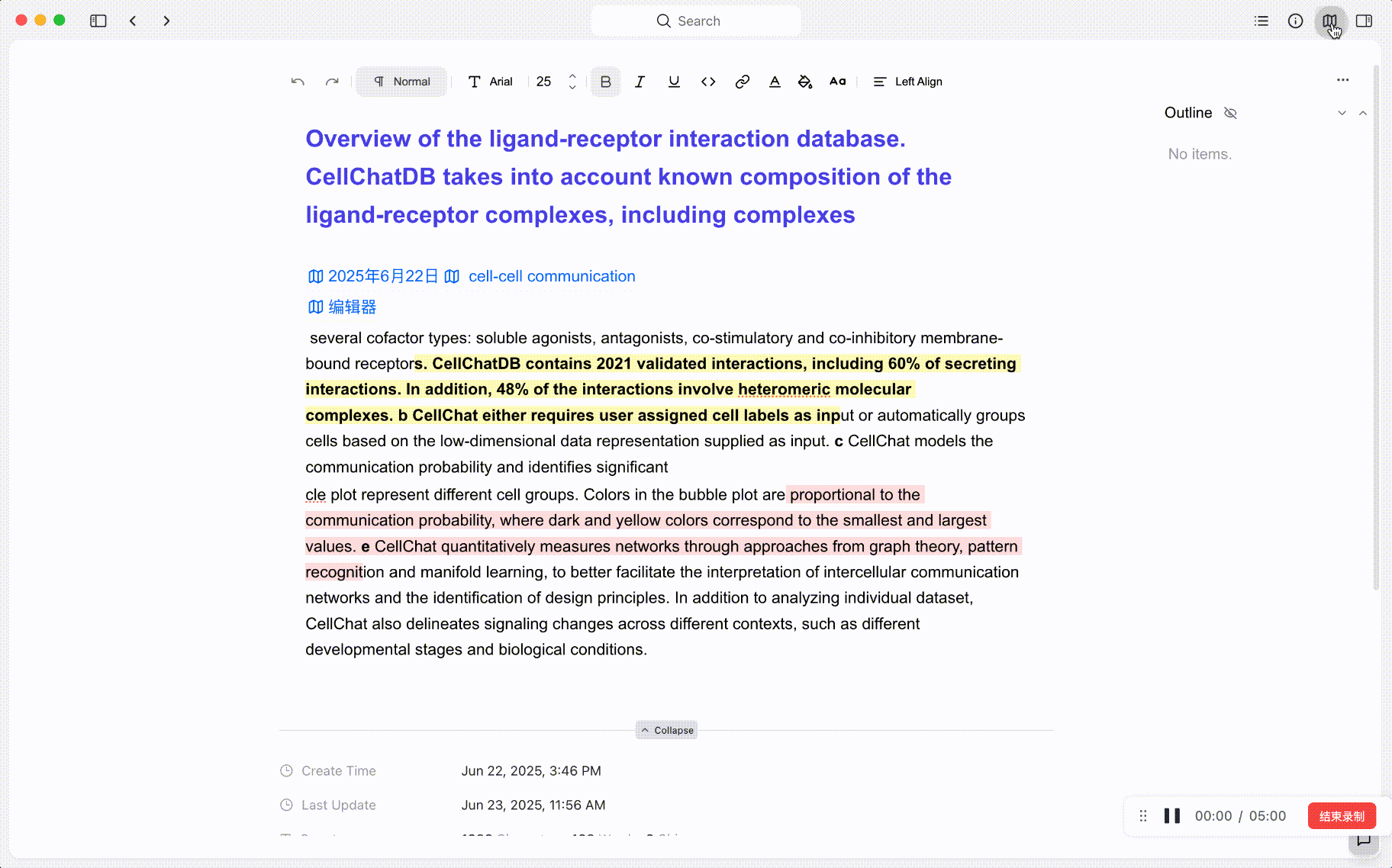🔗 Bidirectional Links
Bidirectional links are one of FlexNote’s core capabilities for building a knowledge network. They allow cards to establish “two-way” reference relationships, connecting contexts and forming nonlinear structured content.

✨ Features Overview
- @ Mention any card: Quickly reference an existing card by typing
@. - Automatically create back links: Referenced cards automatically keep track of who linked to them (backlinks).
- Create relationships with arrows on whiteboards: Drag arrows to connect cards on the whiteboard, which also counts as a bidirectional link.
- Visualize links in the info panel: Cards support viewing all incoming and outgoing links in an information panel.

🛠 How to Use
1. Insert references in text
- Type
@to bring up the card search menu. - Fuzzy match card titles and select to insert as a link.
- If the target card doesn’t exist, you can create it directly and establish the reference.
2. Create arrow connections on the whiteboard
- Select a connection point at the edge of a card and drag an arrow to another card.
- Drag one card into another to create a reference relationship.
- A visual and data-level link will be automatically established between the two.
- The created connection is recorded in each card’s info panel for easy tracking.

3. View bidirectional links and relationships
Open the info panel on any card to see:
- Referenced by: Which cards link to the current card.
- References: Which cards the current card links to.
- Whiteboard associations: List of cards connected by arrows.
Also, in a new tab opened card, the right panel quickly shows the whiteboard(s) the card belongs to, allowing preview and editing by clicking.

📌 Use Cases
- Knowledge referencing: Reference concepts, terms, definitions to create cross-content links.
- Visual structure diagrams: Build thematic networks or causal chains with arrows.
- Information tracking: See where a knowledge point is referenced across contexts.
- Project organization: Organize tasks, materials, and plans through relationships.
💡 Tips
- Make good use of
@ mentionsto build contextual text relationships. - Use arrows on the whiteboard for structured visualization and navigation.
- Combine with the info panel to understand the card’s network role and identify central nodes.
Through text mentions and whiteboard connections, FlexNote’s bidirectional linking not only builds a semantic network but also constructs a visual mind map, making your knowledge network clearer and more powerful.